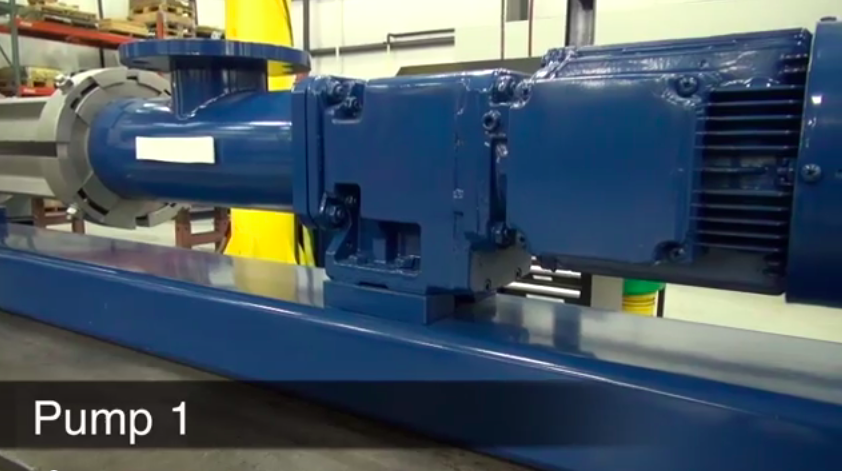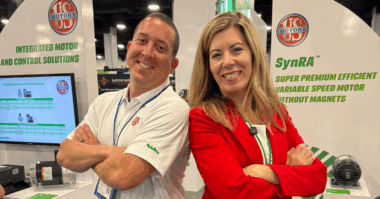Recently, I had the pleasure of touring the SEEPEX facilities with Joe Zinck, Vice President of Operations at their Enon, Ohio facility. In business since 1972, the business has come a long way due to its leading advances in pump and related technology, which was on full display during the tour.
One of the highlights was watching how the new Smart Conveying Technology (SCT) blew the competition away. Its design is intended to allow users to adjust the compression between rotor and stator. As the stator halves wear, an operator can tighten the segments holding the stator halves to regain desired flow. This can double the lifetime of the rotor and stator. The innovative design also allows for unbelievably easy maintenance, especially when it comes time to change the rotor and stator.
To demonstrate, SEEPEX invited Mark Bland and Chris West from Madison Utilities in Alabama to do a blind pump comparison test. It involved doing routine maintenance on pumps, in this case changing the rotor and stator. They were asked to do this on two different pumps simply labeled Pump Number One (SEEPEX pump) and Pump Number Two (competitor’s pump).
There was no comparison. The time and work it took to take apart the competitor’s pump was far longer, and I saw firsthand how hard the guys from Alabama had to work to do it. On the other hand, the SEEPEX pump was held together by three sets of bolts that could be loosened by just about anyone with a halfway decent toolbox.
“I’ve taken apart other pumps in the field,” commented Mark Bland. “One that immediately comes to mind is a pump that had been operating in a wastewater treatment plant, and it was a BEAR. Compared to these SEEPEX pumps, there simply is no comparison. No problems, no bear …”
See for yourself in the video below:
The video showcases several participants from across the country performing a rotor and stator change on two progressive cavity pumps. In addition to Mark and Chris, the participants included:
- Mike Nevius, Gary Beaver, and Virgil Hoskins from a wastewater treatment plant in Fairborn, Ohio
- David Hollingsworth and John Garcia from a wastewater treatment plant in Springfield, Ohio
- Mark Jamison and Barry Stroop from a wastewater treatment plant Fairborn, Ohio
It was obvious which pump was a struggle and which one was user friendly. Among other highlights in the video, the participants observed that Pump Number One was easy to disassemble and only needed a few tools and a gauge to do so. In fact, the users found that the first pump was five times easier to take apart, put back together, and required about 25% of the effort to do so. The first pump was also lighter, easier to handle, could be taken apart in place due to its segmentation, and could even be worked on by one person, alone.
In contrast, Pump Number Two:
- Took longer to take apart.
- The participants had difficulty working with the pinning assembly where the rotor connects to the shaft. They had to line two bolts up, a task that one team struggled with the most when working on the pump.
- Other participants admitted they don’t always have the room to pull apart pumps of this size.
- “Pump two is not my choice to work on ever again,” said one of the participants.
Participants had no trouble guessing which pump was SEEPEX.
I also was able to view and discuss SEEPEX’s intelligent metering and ALPHA review with John Salyers, Territory Manager. The technology is also incredibly easy to install and integrates gear reducers and programmable vector drives in the use of progressive cavity pumps.
The gear reducers are used to give the pump enhanced torque capability across the entire speed range and give the user advanced control even when the input line voltages vary. The programmable drives allow manual and digital speed control for custom parameter settings and easy duplication. This intelligent metering can be used for batching, blending, portioning, and continuous metering.
For more on SEEPEX, be sure to visit their official site or YouTube channel. You’ll also be able to view SEEPEX’s pumps in action at the ACHEMA – World Forum and 31st International Trade Show for Process Industries in Frankfurt, Germany, June 15-19.




